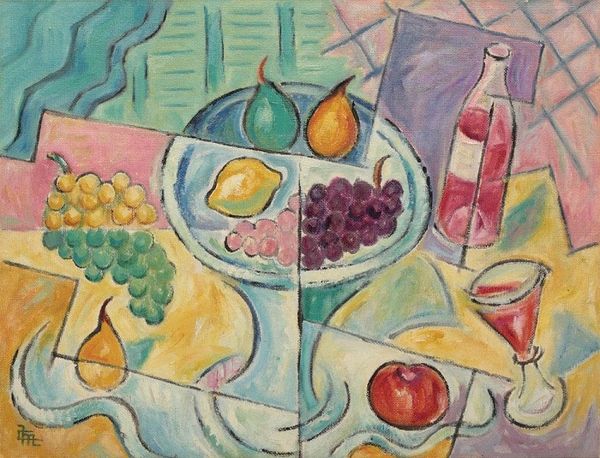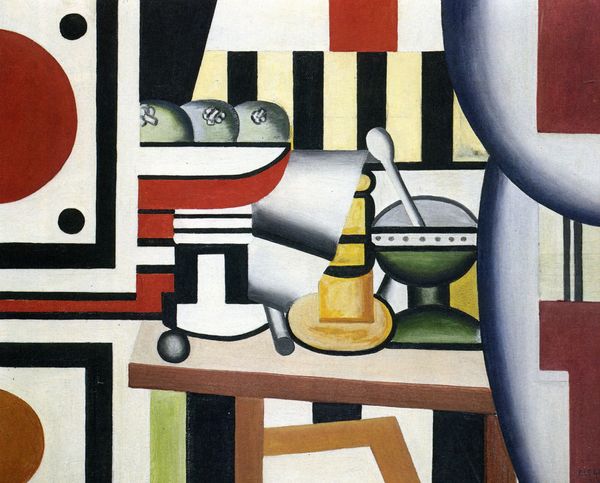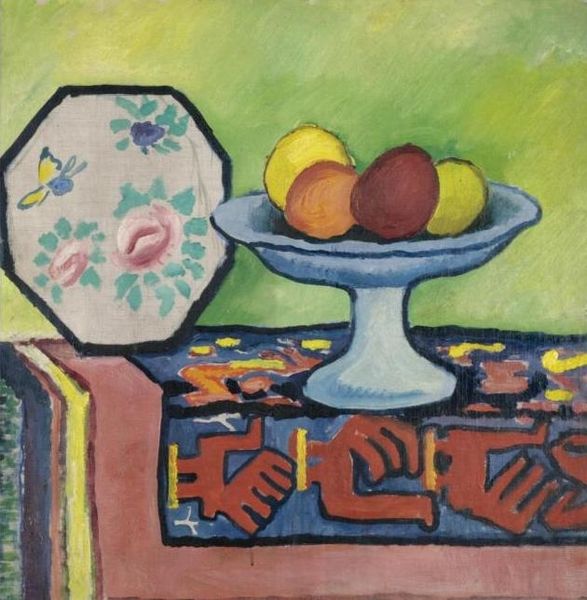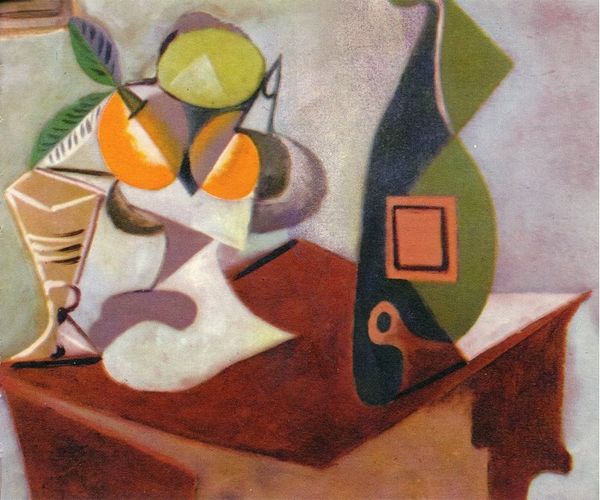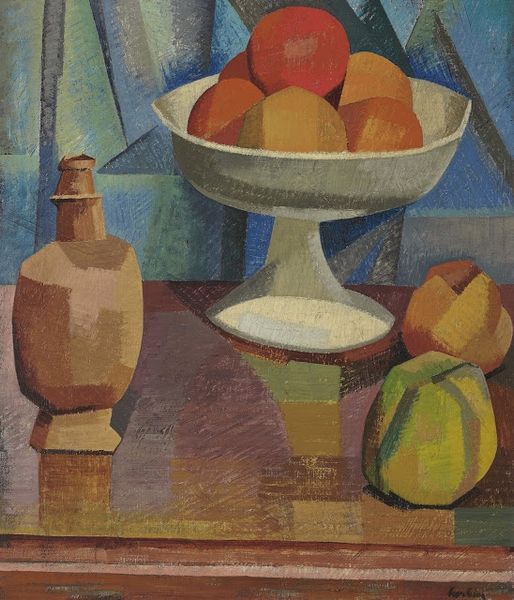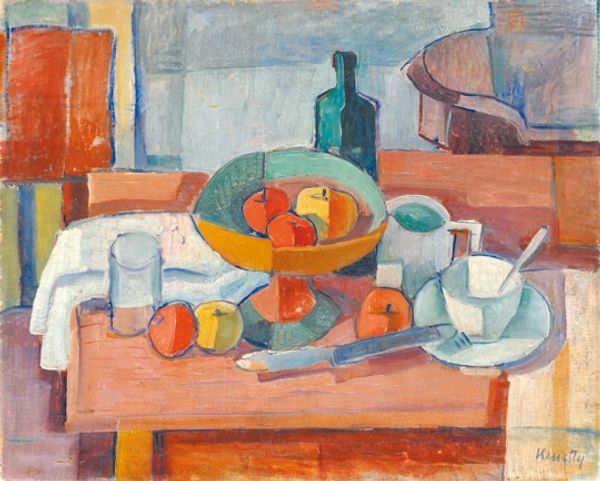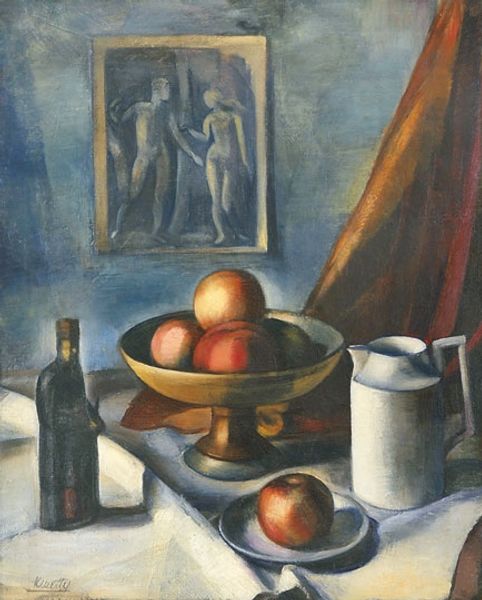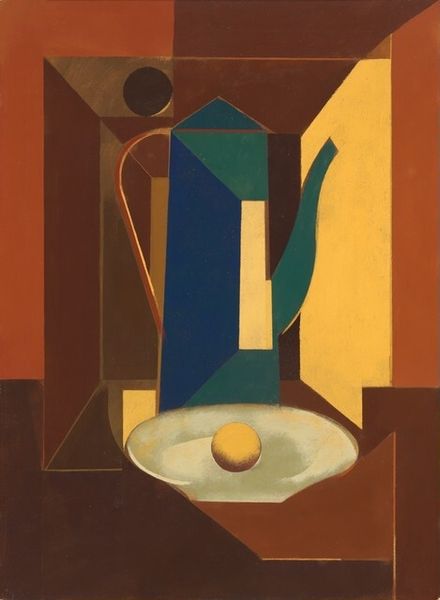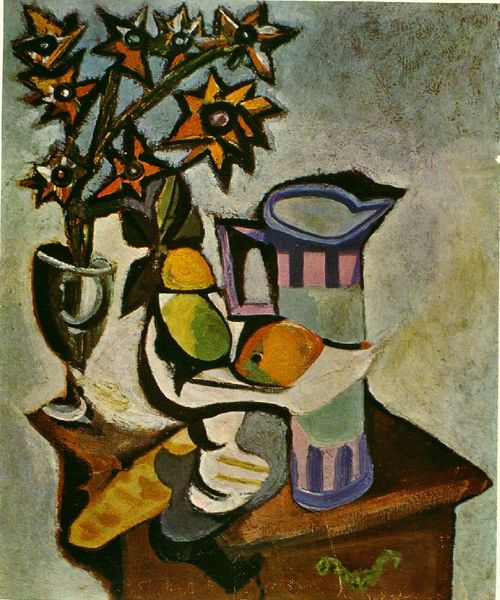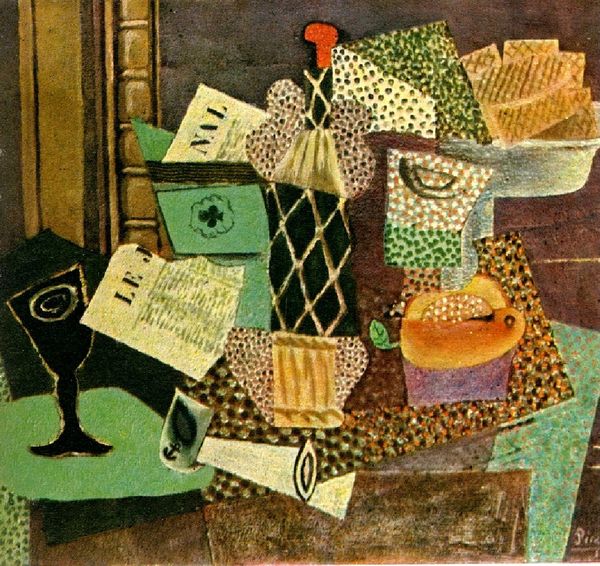
acrylic-paint
#
cubism
#
abstract painting
#
acrylic-paint
#
acrylic on canvas
#
geometric
#
modernism
Copyright: Carlos Quizpez Asín,Fair Use
Editor: Here we have Carlos Quizpez Asín's "Still Life," painted in 1977 using acrylic on canvas. The painting immediately strikes me with its geometric composition, yet there's a familiar, almost domestic, feeling. How do you interpret this work in its historical context? Curator: This "Still Life," situated in the late 70's, demonstrates a fascinating intersection between geometric abstraction and a lingering connection to traditional artistic themes. How do you see Asín engaging with the legacy of Cubism, and what political message might this choice of style carry within the cultural landscape of that era? Editor: I notice elements of Cubism in the way the objects are fractured and presented from multiple viewpoints simultaneously. I hadn’t considered it in a political light, though! Was this choice a statement? Curator: Absolutely. By embracing a European avant-garde style, Asín situates himself in relation to international art movements, but also perhaps implicitly comments on or departs from the dominant, often politically charged, art scenes in Latin America at the time. The domestic setting suggests a quieter form of resistance or perhaps a commentary on societal values. What effect do you think Asín sought with this superimposition of art styles and a still-life, something historically displayed within bourgeois settings? Editor: That's a perspective I hadn't considered. Perhaps he aimed to bridge the gap between international movements and everyday life. It’s definitely given me a new appreciation for the layers of meaning within the piece. Curator: Indeed! Exploring how an artist positions themselves within a global art discourse and the socio-political landscape really enriches our understanding. This helps to see this work as so much more than "just" a still life painting.
Comments
No comments
Be the first to comment and join the conversation on the ultimate creative platform.
